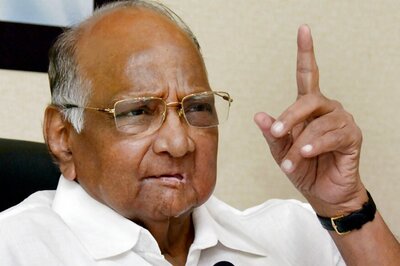
views
Sources in the Indian Army on Tuesday said the disengagement process between the Indian and Chinese Army started at Hot Springs and Gogra on Monday and is expected to be completed at both locations in a few days. At PP15 Hot Springs, the process will be completed by Tuesday evening, while in Gogra it will take a few more days.
"The Chinese Army had started dismantling its structures since yesterday," added the sources. "Under the mutual disengagement, both sides will disengage and move back by 1-1.5 km from the friction points. The two Armies are likely to hold further talks after the disengagement process is completed."
Sources in the government said the Army is keeping a strict vigil on the rearward movement of the Chinese.
The disengagement process began on Monday morning after a nearly two-hour telephonic conversation between National Security Advisor Ajit Doval and Chinese Foreign Minister Wang Yi on Sunday during which they agreed on an expeditious withdrawal of troops from the area. Doval and Wang are Special Representatives for the boundary talks.
The sources said the Indian Army is not lowering its guard in view of the disengagement process in the area and will continue to maintain high-level of alertness to deal with any eventualities. They said the two two Armies are expected to hold further talks later this week after the first phase of disengagement process is completed.
The Chinese military has already removed tents and withdrew its personnel from patrolling point 14 in Galwan Valley, the sources said adding the Indian Army is carrying out a thorough verification of the Chinese pull back.
On the situation in Pangong Tso, they said a "marginal thinning out of troops" has been observed in the area. Sources said there has been minimal reduction of strength on the Chinese side in Pangong Tso, where they continue to occupy Finger 4.
As per the decisions arrived at corps commander-level talks on June 30, the two sides would create a minimum buffer zone of three kilometre in most of the areas where they were locked in a standoff. The pullback was confirmed after a survey was undertaken to verify if China had acted on its assurances of a mutual withdrawal.
An official described the withdrawal as "baby steps in the disengagement process" and said it remains to be seen "if this is a lasting, genuine disengagement."
Chinese Foreign Ministry spokesperson Zhao Lijian confirmed progress in disengagement. "China and India have made progress coming up with effective measures for frontline troops to disengage and deescalate the border situation at the third commander-level talks between the two militaries on June 30," he was quoted as saying by Global Times.
News18 had earlier reported that China had agreed the broad paramaters to pull back its troops from patrolling points 14, 15 and 17 after an understanding was reached during the June 30 Corps Commander-level talks.
Sources on Monday said Chinese troops have stepped back from their positions at Point 14 in the Galwan Valley. PLA soldiers have also moved back from Point 15 and Point 17 — in the Hot Springs and Gogra areas — where Chinese troops intruded several hundred metres beyond what India asserts is the LAC.
Both militaries hope to avoid what some experts have described as a Siachen-isation of the LAC, a reference to the India-Pakistan conflict of the Siachen Glacier, where troops remain continuously deployed in extreme weather conditions, and fire-exchanges often claim lives.
The Chinese Foreign Ministry had on June 19 said that “the Galwan Valley was located on the Chinese side of the LAC in the western section of the Sino-Indian border”, laying a claim to the area, after several decades.
Negotiations, however, have remained deadlocked on the face-off along a series of eight ridge-lines radiating away from Pangong lake, known as Fingers, where the PLA has blocked Indian troops from patrolling up to their claimed LAC.
(With inputs from PTI)



















Comments
0 comment